US Foreign Aid per Country: Who Gets the Most?
Last Updated: November 22, 2021
What Countries Receive Foreign Aid From The United States: Europe
How Much Foreign Aid Does the US Give: North and Central America
How Much Money Does The US Give to Other Countries: South America
Why Is Foreign Aid Given: Asia
Foreign Aid Statistics by Country: Africa
US Aid to Other Countries: Oceania
Conclusion
US foreign aid per country is huge!
Did you know that the current US foreign aid system was established in 1961?
To help you fully grasp the magnitude, we prepared an infographic. It’s straightforward and shows just how many countries around the world get US aid and how much of it is there.
That’s a lot of money!
The process is helmed by the United States Agency for International Development (USAID), an independent agency responsible for providing foreign aid and developmental help worldwide.
However, that’s not the only agency that disburses foreign assistance to other countries. The Department of State, the US Military, the Peace Corps, and countless other governmental agencies are involved in the process.
This includes direct funding, delivery of goods, technical assistance, educational programming, and health care for foreign governments. It also covers the maintenance of foreign militaries and security forces and local businesses and humanitarian groups, international organizations such as the United Nations, and other non-governmental organizations.
Since the program was started, the US has contributed billions of dollars in foreign military and humanitarian aid. The United States is currently the largest donor of food aid in the world.
And it gets even more interesting. Did you also know that:
Amazing Facts about US Foreign Aid per Country
- Asia receives almost $20 billion from the US annually.
- Israel is the most consistent recipient of US aid, with $146 billion received since its founding.
- The US spends between $40 and $50 billion on foreign aid annually.
- Over 30,000 jobs have been created as a result of the US aid to Haiti.
- Afghanistan received $13.5 billion in 2012.
- Europe has the largest number of countries that don’t receive US foreign aid.
- Ukraine receives over a quarter of aid slated for Europe.
Fascinating!
Well, we have more where that came from!
Using government data about US foreign assistance, we created a list of the 30 countries across six regions that received the most US foreign aid for that area.
NOTE: Since the foreign aid numbers vary from year to year, we’ve opted to take the 10-year average from 2011–2020 as a representative number. We provided additional commentary about US foreign aid where necessary.
What Countries Receive Foreign Aid From The United States: Europe
Europe is the continent with the largest percentage of countries that frequently don’t receive foreign aid from the US or receive very low amounts. Europe as a whole receives over $1.6 billion per year. Only Ukraine breaks the half a billion barrier (meaning that over a quarter of the aid to Europe goes to Ukraine), and most of the remaining ones receive less than $100 million.
1. Ukraine receives an average of $423,576,629 in foreign aid from the US per year.
(Source: ForeignAssistance.gov)
Ukraine has been receiving increasing amounts of foreign assistance since the Russian takeover of the Crimean Peninsula. The biggest uptick occurred in 2016 when total aid jumped from $273 million to over half a billion per year. The trend seems to be continuing as foreign assistance from the US reached $637 million in 2020. The United States has given more than $1.5 billion in security aid alone since the annexation.
A large chunk of the foreign assistance to Ukraine is meant to help the country’s military and security services. The funding also supports nuclear security and nonproliferation controls, and the Global Health Initiative (GHI), and the Global Climate Change Initiative (GCCI).
Ukraine also used American foreign aid to fight Russian-backed forces in a conflict in the Donbas region. Foreign aid is also used to gain hardware such as Javelin anti-tank missiles, grenade launchers, night vision goggles, radars. The country also received two Island-class patrol boats from the United States to boost its presence in the Black Sea in 2019, and three more are slated to arrive in November 2021.
2. Russia receives an average of $274,780,483 in foreign aid from the US per year.
While the aid to Russia decreased dramatically in recent years, it was once one of the biggest recipients of US foreign aid, receiving around $1.5 billion annually from 2005 to 2008. A good chunk of that came from the department of energy and was earmarked for supporting safe handling and use of nuclear materials for civilian projects.
The US Department of Energy is still the main source of foreign aid to Russia, and it aims to promote international nuclear materials protection and cooperation. Additionally, aid is sent to Russian NGOs as a part of the Endowment for Democracy that is supposed to promote democratic institutions such as political groups, trade unions, free markets, and business groups.
3. Georgia receives an average of $163,725,255 in foreign aid from the US per year.
(Source: ForeignAssistance.gov)
Georgia is one of the United States’ closest allies among the states that gained independence after the USSR collapsed in 1991. The United States has increased its diplomatic partnership with Georgia since Russia’s 2008 invasion of Georgia and the 2014 invasion of Ukraine. They have provided significant economic aid, as well as some security assistance.
Each year, Georgia receives significant military foreign assistance from the United States. Since 2010, the US nonmilitary aid to Georgia has amounted to around $64 million a year on average. Back in 2020, Congress secured approximately $90 million in nonmilitary aid to Georgia.
4. Turkey receives an average of $124,103,154 in foreign aid from the US per year.
(Source: ForeignAssistance.gov)
The United States and Turkey have been NATO allies since 1952. However, the relationship between the two countries has weakened in recent years. According to US foreign aid spending data, in 2018, President Donald Trump called for the increase of rates on Turkish imports of steel and aluminum.
Turkey has spent most of its aid to support mainly Islamic nations and countries with a historic connection to its Ottoman past in Central Asia, the Caucasus, and the Balkans. It has also led relief efforts to Haiti since the earthquake there in 2010.
After the global financial deflation, many economic forms of the country crashed. However, Turkey carried out stimulus packages, including temporary tax cuts. As a result, Turkey’s economy recovered from the crisis faster than many other nations. In 2021, the GDP per capita in Turkey reached $15,100.
5. Bosnia and Herzegovina receives an average of $58,567,551 in foreign aid from the US per year.
(Source: ForeignAssistance.gov)
US Government aims to help Bosnia and Herzegovina integrate into the Western institutions, strengthen its own multi-ethnic democratic principles and civil society, and develop strong judiciary and law enforcement sectors.
Since 1992, the US provided Bosnia and Herzegovina with over $2 billion from its foreign aid budget. The assistance for 2020 and 2021 included COVID supplemental funding. The US has exported $21.6 million in goods to Bosnia and Herzegovina during 2020 and imported $98 million.
Currently, over 50 US and US-affiliated companies have a full-time presence in the country.
How Much Foreign Aid Does the US Give: North and Central America
When it comes to North and Central America, Mexico and Haiti are the biggest recipients of US foreign aid. The region receives almost $1.4 billion per year, and a large portion of it is spent on disaster relief, the fight against corruption, and economic stimulus.
1. Haiti receives an average of $368,968,017 in foreign aid from the US per year.
(Source: ForeignAssistance.gov)
In 2010, the earthquake devastated Haiti and it also experienced a cholera outbreak. The United States issued emergency response aid to help citizens recover. They also issued long-term aid that had the purpose of helping support jobs, education, and infrastructure. In 2016, hurricane Matthew battered large parts of southern Haiti. The United States sent more than $100 million for emergency response and supplies.
Since then, Haiti has been battered by a series of natural disasters, inflicting severe damage, causing loss of life, and hampering recovery as well as relief efforts.
With US humanitarian aid, Haiti has achieved serious improvements in basic health indicators. The country has experienced a stable and serious drop in the number of cholera cases since the original outbreak. Over 30,000 jobs have been established via programs to develop private sector competitiveness.
While the currency value cratered at the end of 2020, it has been experiencing a steady recovery and rose in value by 60% until the end of 2021. However, this is paired with a reduction in GDP (projected at 6.5%) during the 2021 fiscal year.
2. Mexico receives an average of $330,553,180 in foreign aid from the US per year.
(Source: ForeignAssistance.gov)
Mexico is the biggest recipient of US financial assistance in North America. The countries share 2,000 miles of border and have 55 active points of entry. The trade between the US and Mexico amounted to an estimated $577.3 billion during 2020 alone. The country is the second-largest foreign-oil supplier to the US and the largest export market for the US natural gas and refined petroleum products.
Of course, US aid to Mexico includes more than simple funds and trade agreements. During the COVID-19 pandemic, the two countries worked together to combat the disease and ameliorate secondary economic effects in both countries. In addition, they’re working together on vaccine distribution, with the US sending almost six million doses of COVID-19 vaccines to Mexico.
3. Guatemala receives an average of $178,236,292 in foreign aid from the US per year.
(Source: ForeignAssistance.gov)
According to the data on US foreign aid per country, in the last two decades, Guatemala has received billions of dollars in aid from the US government with the aim to develop the country’s overall economic and political environment. In 2016, the value of aid given by all US government agencies totaled over $296 million. Most of this funding ($134 million) came from the USAID, with smaller additions from the Departments of Agriculture ($71 million) and Defense ($33 million).
US foreign aid statistics reveal that Guatemala has experienced some improvement in its overall economic, political, and security situation. Nevertheless, the country is still in an uphill battle for improving its local and national governing institutions, the justice system, and severe degrees of corruption. The country has been a stable economic performer in recent years, with a GDP increase rate predicted to rise by 8% year-on-year by the end of 2021.
4. Honduras receives an average of $112,798,826 in foreign aid from the US per year.
(Source: ForeignAssistance.gov)
Most of the aid Honduras receives goes toward reducing crime, violence, government corruption, and excessive degrees of poverty and food insecurity. The US government uses various assistance programs to stimulate economic growth and strengthen democratic institutions.
Through the Department of Defense and USAID, the US provides funds and support for internal disaster assistance and emergency humanitarian support to meet immediate food, shelter, and economic needs in case of environmental disasters like Hurricanes Eta and Ita in 2020. Efforts to improve hurricane readiness are ongoing.
5. El Salvador receives an average of $110,035,451 in foreign aid from the US per year.
(Source: ForeignAssistance.gov)
The majority of aid proceeds dedicated to El Salvador go to non-profit and civil society organizations. They t run programs that support economic and agricultural development, combat violence, empower youth, and fight corruption.
US foreign aid spending for this country had a major goal for the period of 2005–2013. The goal was to transform El Salvador’s tax system, set up its annual revenue by $350 million and its annual social use by $160 million between 2005 and 2013. El Salvador successfully completed the five-year plan. They dedicated the funds to education, energy, agriculture, rural business development, and infrastructure, predicted to benefit over 700,000 people, including over 33,000 households.
How Much Money Does The US Give to Other Countries: South America
As you’ll see below, Colombia receives more than half of the aid to the entire continent. South America receives almost a billion in foreign aid from the US, mostly spent on economic stimulus programs and poverty alleviation.
1. Colombia receives an average of $573,278,206 in foreign aid from the US per year.
(Source: ForeignAssistance.gov)
The United States and Colombia are diplomatic and trade allies. Congress appropriated more than $10 billion to support various programs between 2000 and 2016. About 20% of those were financed through the US Department of Defense. Since 2017, Congress has granted roughly $1.5 billion in additional help for Colombia.
Colombia has transformed over the former 20 years from a weak state to a spirited democracy with a developing market-oriented economy, in no small part thanks to American foreign aid.
The US strongly supports Colombia’s intentions to ensure lasting peace and promote security and economic opportunities for its people. A large portion of US aid is directed at undermining transnational criminal organizations whose movements, notably narco-trafficking, are devastating to both the citizens of Colombia and the United States.
The GDP growth in Colombia dipped by almost 7% in 2020, but the country remains in good financial health.
2. Peru receives an average of $163,381,433 in foreign aid from the US per year.
(Source: ForeignAssistance.gov)
The United States established a diplomatic relationship with Peru in 1827. It was strengthened in 2009 with the United States-Peru Trade Promotion Agreement (PTPA). Since then, the aim of US foreign aid spending has been to provide farmers an alternative livelihood in areas with coca (the plant base of cocaine), to maintain sustainable natural resource management. They also aim to undermine corruption and to promote effective governance and rule of law, and support defense cooperation.
The US supported Peru’s National Forestry Wildlife System in 2017, introducing a new strategy that would help track timber and stop illegal shipments.
3. Ecuador receives an average of $48,356,564 in foreign aid from the US per year.
(Source: ForeignAssistance.gov)
US assistance to Ecuador has the goal of modernizing government participation in capital markets and infrastructure development, strengthening democratic and legal institutions, defending human rights, mitigating the risk and impact of natural disasters, and helping the country integrate better into the developed world in general.
The US also provides humanitarian assistance by funding local and international organizations that help Ecuador provide services to vulnerable populations.
Additionally, the two countries signed the bilateral Development Objectives Assistance Agreement that will invest $62.5 million over five years in environmental, democracy, and governance programming.
4. Brazil receives an average of $37,264,599 in foreign aid from the US per year.
(Source: ForeignAssistance.gov)
The government of Brazil acts together with the US government to improve change in other countries, notably in Africa and Latin America. Through trilateral technical aid, they have carried out food security programs to raise agricultural productivity, improve food security, and address school nutrition in Honduras, Haiti, and Mozambique.
In August 2014, USAID signed an agreement with the government of Brazil to aid biodiversity conservation in the Amazon and provide trilateral technical help for other countries in targeted areas. The agreement participants will supply resources to find solutions for the conservation of biodiversity and sustainable socio-economic livelihoods of the Amazon.
5. Venezuela receives an average of $31,961,817 in foreign aid from the US per year.
(Source: ForeignAssistance.gov)
Since 2016, Venezuela has been receiving increasing amounts of assistance from the US foreign aid budget. In 2020, the amount peaked at over $160 billion. The aid is mostly intended for emergency food and health aid for Venezuelans, leaving the corrupt rule of Nicolas Maduro. These supplies of groceries, nutrition biscuits, vitamin supplements, hygiene products, and medicinal aid.
Venezuela’s political and economic crisis is seen as one of the world’s deepest economic falls outside of a war or natural disaster. In 2021, GDP per capita declined to $1,541 from $5,178 the year before.
Why Is Foreign Aid Given: Asia
Asia is the home to the biggest recipients of US foreign aid, most of them located in the Middle East. In fact, the region receives more foreign aid than the rest of the world combined. While Afghanistan has received the largest total in the last 10 years, Israel receives the most consistent and substantial aid.
1. Afghanistan receives an average of $7,454,639,320 in foreign aid from the US per year.
(Source: ForeignAssistance.gov)
Like Iraq, Afghanistan has been one of the least stable countries in the Middle East. The existence of the Taliban and the military invasion by the United States have exacerbated the instability in the already struggling country. The aid funneled into the country aims to alleviate the suffering of the Afghani people and promote a stable, inclusive, and increasingly prosperous country. The amount of aid has been dropping steadily since its peak in 2011 when the US provided the country with over $13 billion in one year.
The US withdrawal in 2021 and the subsequent takeover of the country by the Taliban just means that foreign aid will have to be directed in other ways, with more focus on financing infrastructure and less on direct military presence and defense. The amount given is also significantly lower, with aid in 2020 barely going over $1 billion.
2. Israel receives an average of $3,175,727,852 in foreign aid from the US per year.
(Source: ForeignAssistance.gov)
Israel is probably the country that receives the highest levels of foreign aid from the US. Almost all of the assistance is funded by the Department of State and it’s managed by the Department of Defense; it’s aimed at the security system management and reform. The US has been providing Israel with nearly $3 billion annually since 1985, occasionally exceeding that figure. The total figure since the Second World War exceeds $146 billion (not adjusted for inflation), but roughly 74% of it was spent on purchasing American goods and services.
The above figure does not include additional aid like the $500 million in missile defense aid slated for Iron Dome and other defensive measures implemented by the Israeli government. This brings the total for 2020 to more than 3.8 billion, which makes Israel the largest recipient of US aid by country.
3. Iraq receives an average of $1,692,093,074 in foreign aid from the US per year.
(Source: ForeignAssistance.gov)
Iraq is one of the biggest recipients of United States foreign aid in the world. The US has continually been sending financial and material aid to help stabilize the region. They also provided economic aid for the destruction of world oil prices, the stabilization of territories gained back from the Islamic State, and humanitarian aid to the needs of displaced citizens. The funding also provides food, clean drinking water, emergency services, support for local businesses, and the rebuilding of health and education infrastructure.
4. Jordan receives an average of $1,457,433,647 in foreign aid from the US per year.
(Source: ForeignAssistance.gov)
Because of its location next to war-torn Syria, Jordan is at the focus of the present refugee humanitarian crisis. In 2018, the US and Jordan signed a memo of understanding to provide Jordan at least $1.275 billion annually over the next five years. That’s a change from the previous three-year promise of $1 billion annually.
The current aid arrangement will help political, military, and economic programs. It will also provide humanitarian aid for the recent flood of refugees from Syria and Iraq.
5. Pakistan receives an average of 906,705,658 in foreign aid from the US per year.
(Source: ForeignAssistance.gov)
Pakistan has received billions from the American foreign aid budget while still harboring leaders of the Taliban. That resulted in a tense relationship with the United States. Since 2002, the US has provided Pakistan with over $14 billion in aid to fight insurgents and terrorism in the region.
This includes grants to purchase US military equipment and can in the future be a part of the US-Pakistan agreement on the use of Pakistani airspace for military operations in Afghanistan.
The US civilian assistance program aims to help Pakistan develop towards being a self-reliant, secure, stable, and prosperous country. Projects supporting economic growth and bilateral trade, as well as humanitarian efforts and infrastructure building have been developed for this purpose.
Foreign Aid Statistics by Country: Africa
Africa is the second-biggest recipient of US foreign aid, with an average of over $12 billion annually. Disaster relief and humanitarian efforts are the biggest reasons for the assistance.
1. Egypt receives an average of $1,263,137,974 in foreign aid from the US per year.
(Source: ForeignAssistance.gov)
Egypt is one of the top recipients of US aid in the world. It received more than $80 billion since 1978 — roughly $30 billion in economic and $50 billion in military assistance. Both countries share a common interest in maintaining peace and stability and regional security in the Middle East. Thus, the US is intent on promoting Egypt as a stable and prosperous African country, where the government protects the basic rights of its citizens and fulfills the aspirations of the Egyptian people.
During 2019 and 2020, Egypt received almost $3 billion in total US foreign aid, and the Trump administration requested $1.38 billion in funding for 2021, over 90% of which was filed as Foreign Military Funding.
2. Kenya receives an average of $913,427,700 in foreign aid from the US per year
(Source: ForeignAssistance.gov)
Most of Kenya’s aid is assigned to medical, emergency, and health services, with AIDS support funding from PEPFAR. Kenya is likewise in a Relief-to-Development Transition and receives funds to help drought-prone areas affected by climate change. The country received an additional $33 million in 2017 to support official accountability and foster the improvement of drought-prone areas, thus shielding its populace from climate disasters.
Kenya’s political policy still suffers from pervasive government corruption and ethnic disputes. A lot of citizens and farmers are still living in drought-prone areas. This could add up to catastrophe for some communities in forthcoming years and worsen tensions in the country. The economy is growing, in part because of the increased revenue from agricultural harvests, remittance inflows, and lower food prices.
3. Ethiopia receives an average of $894,658,484 in foreign aid from the US per year.
(Source: ForeignAssistance.gov)
As Ethiopia suffers frequent droughts, it has been a constant recipient of US assistance since USAID’s inception. Additionally, its strategic location makes it important to the US, and the country has received exceptionally high levels of funding. Apart from humanitarian assistance, the US directs assistance to promote democratic, citizen-responsive governance and broad-based economic growth and prosperity.
Most recently, the United States promised to provide an additional aid of an additional $149 million to Ethiopia in July 2021 to fight the famine in the Tigray region. The funding will address life-threatening hunger by providing enough food to feed five million people for nearly two months.
4. South Sudan receives an average of $699,368,395 in foreign aid from the US per year.
(Source: ForeignAssistance.gov)
The United States government is the leading donor to South Sudan. The assistance provides humanitarian assistance, essential services, and education. The US gave $481 million in humanitarian aid during 2019 to help people affected by ongoing conflict and food instability in South Sudan. Help was also necessary for the estimated 908,000 people impacted by serious flooding in recent months.
The US humanitarian assistance that provided support for fundamental human needs (including access to water, health, and education to the people of South Sudan) since 2013 is estimated to be approximately $4.68 billion.
5. Nigeria receives an average of $675,859,666 in foreign aid from the US per year.
(Source: ForeignAssistance.gov)
The United States and Nigeria are political and economic partners. The US foreign aid statistics show that humanitarian services provided to the areas ruined by the terrorist group Boko Haram result in lessening poverty. The aid also funds the Strengthening Integrated Delivery of HIV/AIDS Services (SIDHAS) program, as well as a plethora of malaria programs. The US government and USAID have provided more than $526.7 million in humanitarian aid since 2017. They continue to be one of the greatest humanitarian benefactors to the region.
US Aid to Other Countries: Oceania
A large portion of US aid to the countries in Oceania is spent to support programs that ameliorate the consequences of climate change across the Pacific. This is especially helpful for struggling island nations that will be heavily impacted by the rising sea levels and damage to the local ecosystem.
1. Micronesia receives an average of $126,499,292 in foreign aid from the US per year.
(Source: ForeignAssistance.gov)
The United States has had a diplomatic and supportive relation with Micronesia since World War II. Back then, the country became a part of the Trust Territory of the Pacific Islands. The United States is providing over $110 million in aid every year, along with a variety of federal grants and services, until the fiscal year 2023.
The US aid arrangements are designed to benefit the country on its path to economic growth. It also aims to improve its education, health, and infrastructure, as well as provide clean water. The country is remarkably vulnerable to natural disasters and the potential effects of climate change which is why the US aid also focuses on strengthening climate resilience through disaster management.
2. The Marshall Islands receives an average of $83,039,740 in foreign aid from the US per year.
(Source: ForeignAssistance.gov)
What is foreign aid intended for other than helping the nations in dire need? The Marshall Islands is one of those nations.
The Marshall Islands is a sparsely populated, low-lying, isolated Pacific island country. This makes it vulnerable to transnational threats and natural disasters, as well as the growing effects of climate change. The US aid concentrates on supporting health, education, and infrastructure in the Marshall Islands. They also focus on the Marshall Islands’ ability to achieve maritime security functions and strengthen climate resilience through disaster readiness. The US assistance is predicted to provide more than $70 million annually through the 2023 fiscal year, including donations to a jointly maintained trust fund and financial aid from other US federal grants.
3. Palau receives an average of $23,097,826 in foreign aid from the US per year.
(Source: ForeignAssistance.gov)
Palau is a recipient of a wide range of federal programs that aim to help the country in achieving healthy economic growth. The US assumed administration of Palau following World War 2 and the country gained independence in 1994, 12 years after signing a Compact of Free Association with the United States.
While Palau remains a sovereign nation and conducts its own foreign relations, the US will remain responsible for its defense until 2044. The two countries cooperate on a broad range of issues like promoting sustainable development, strengthening regional security, and addressing environmental concerns.
4. Papua New Guinea receives an average of $9,288,958 in foreign aid from the US per year.
(Source: ForeignAssistance.gov)
Papua New Guinea and the US act closely on many issues. From developing transparency and efficient governance to fighting human trafficking, controlling the effects of climate change, protecting fisheries, improving public health, and encouraging gender equality.
According to the US foreign aid statistics, in 2017, the United States granted funding for assistance in the areas which suffered from serious earthquakes. The United States also contributes to police and a lot of other training and education courses to national security officers and employees. The US companies based in Papua New Guinea have also financed a range of health and advancement projects.
5. Solomon Islands receives an average of $5,344,819 in foreign aid from the US per year.
(Source: ForeignAssistance.gov)
In addition to climate change and disaster prevention programs, the US supports Solomon Islands in a variety of ways. In 2020, USAID launched a five-year program worth $25 million aimed at strengthening competitiveness, agribusiness, livelihoods, and the environment. The program is designed to improve economic opportunities and trade, promote the development of agribusinesses, expand infrastructure, and improve natural resource management.
What’s more, the US funds efforts that support infection prevention, foster community engagement, improve hygiene, and assist businesses in recovering from the impact of COVID-19.
Conclusion
If all countries that the US contributes to were included, the US foreign aid per country list would include almost every country in the world. However, foreign aid doesn’t only help the nations that receive the funds. Each one of them can be regarded as an investment.
These investments further America’s foreign policy interests on issues that include increasing free markets, fighting extremism, providing steady democracies, and addressing the root causes of poverty while simultaneously fostering global goodwill. In short, foreign aid is good for everyone involved.


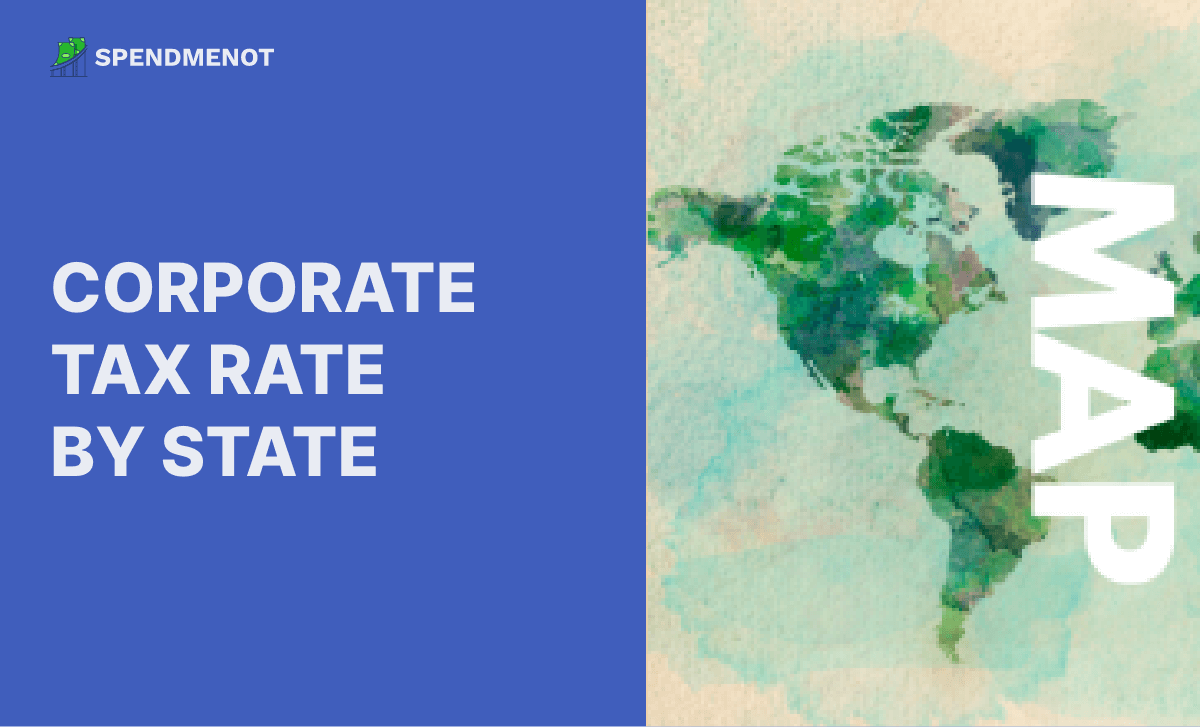

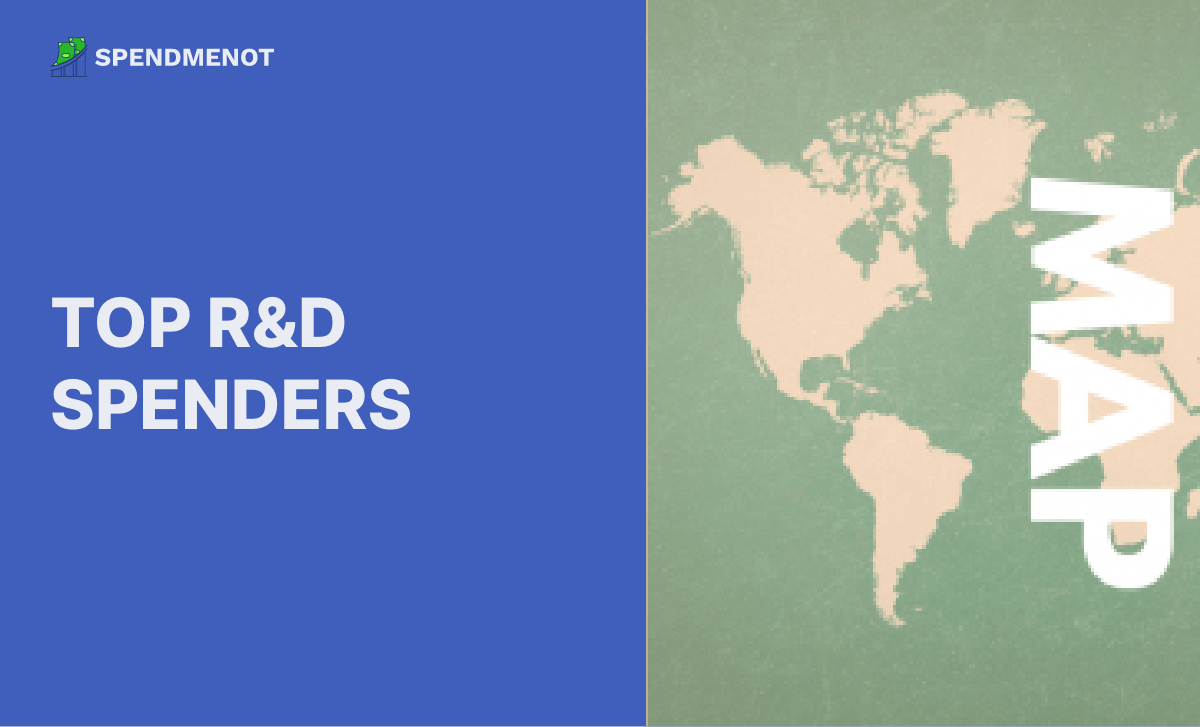
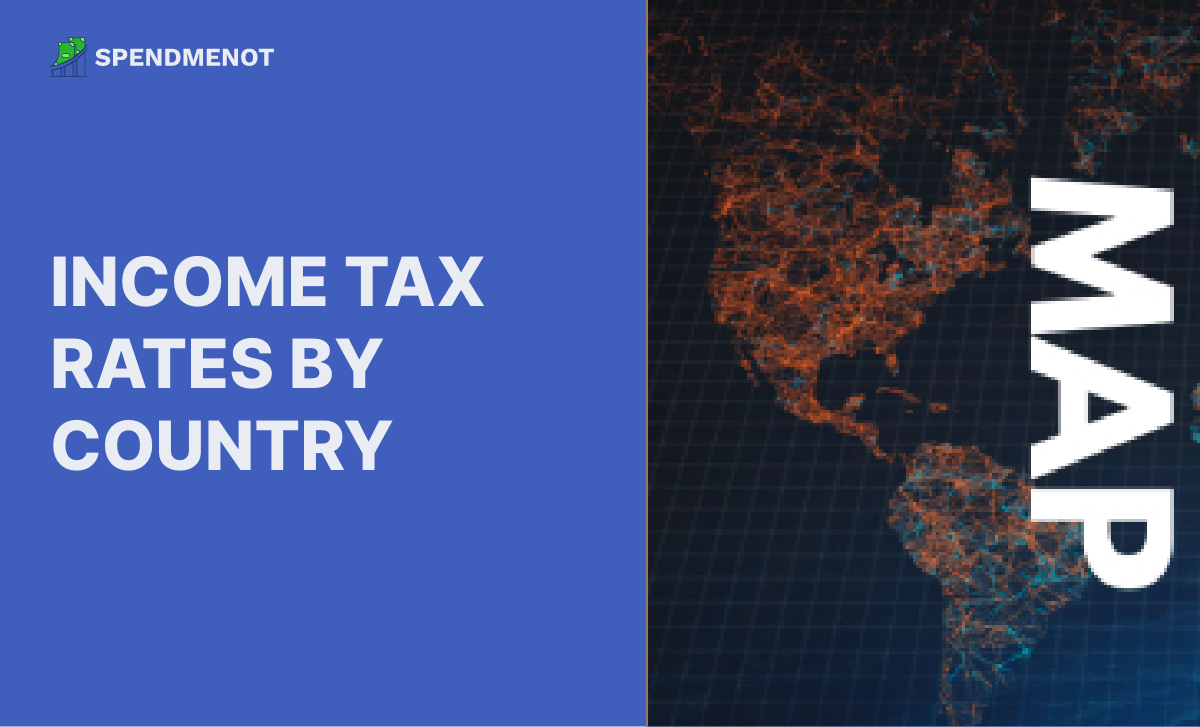
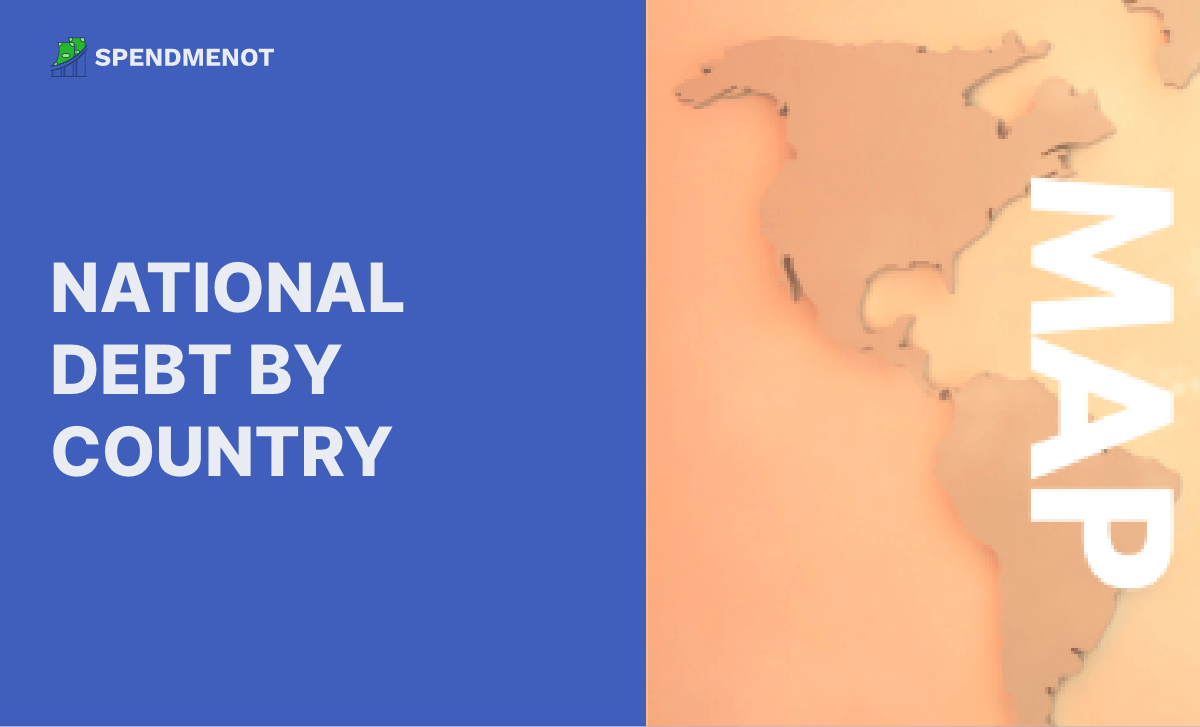

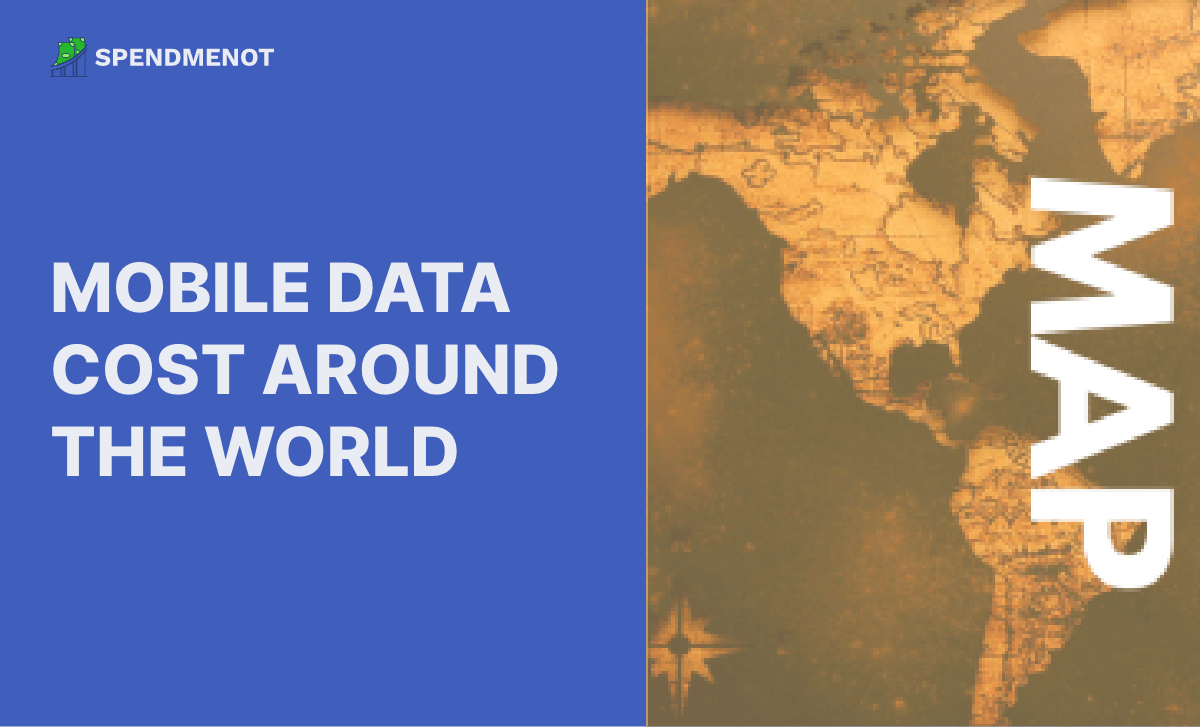


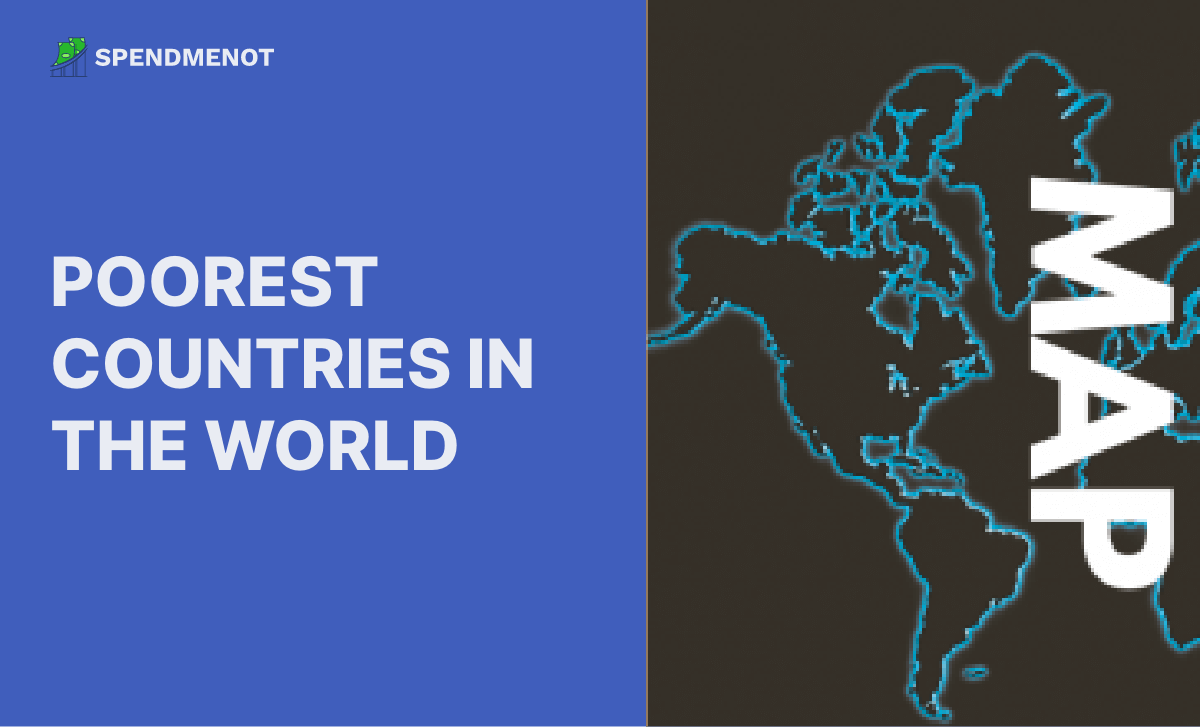
Charlene A Springer
October 4, 2021 at 5:57 am
Need the names of the people that approve or recommend that the U.S. give money to a country. Is there a committee in congress that makes these decisions or is it the Executive Branch that makes these decision. Do foreign countries have lobbiest that influence the U.S. Who decides what country get money and how much. How do they decide this?
Michael Greene
February 27, 2022 at 6:53 am
The Congress makes all those funding decisions, based on requests from the executive branch. And before you say “give money to a country” you should know that every dollar is sent for the purpose of furthering American goals in that country. We support those governments because they support us in the region. We give them cash so they can buy American goods.
For decades, much of our aid to foreign countries was done so we could maintain friendly relations with countries that surrounded the Soviet Union, so we could keep the Soviets surrounded. But after 9/11, fifty countries joined us in Afghanistan and Iraq, and we gave aid to 100 countries that all helped us find and capture terrorists.
Foreign aid is NOT philanthropy. It’s a way of keeping the world marketplace open for our goods.
Roberto Delgado
October 11, 2021 at 5:43 am
Republicans and a few conservative Democrats in Congress, have strongly criticized Progressive Democrats for tne Big Back Better $3.5 trillion Infrastructure Bill and have categorized it as an entitlement that will make people lazy. Mitch MCCONNELL & Koch Brothers undercover Demo-Rats Joe Manchin and Kriten Senema complaint it’s too much. Is it an entilement to give all of these countries that much money? What about a billion plus to Egypt and almost 3 billions a year to Isreal? How do we give to the fossil fuel and the farm industries? Why are we giving to mojor corporations to relocate in a giving city, especially when some of them do this every 10 years to collect every where they go? Why are we giving away billions for research a d development to multi-billion dollars corporations? Why are we allowing them to award themselves millions in bonus, stock options and other benefits after we bail them out?. Are these financial aids/entitlement or walfare to the rich programs? Please ask Republicans, Krysten Senema, Joe Mancin, moderates and conservatives about it. Why the Parlamentarian hasn’t objected to it? Why noone complaints about giving money to foreign nations who don’t contribute into the US treasury but raise hell about a budget that will definitely improve the quality of life of everyone in the US, especially the least fortunate? Why the Black and the Latino Caucus, etc haven’t brought this to the attentionof the “American people? Are they afraid? Well, when it comes to that money, you danm right we are entitled and that’s because, it’s our f-ing money, not the government’s. The government doesn’t hi shit because all they do is collect money and redistribute it. And for most part, has been greatly inefficient about it. My suggestion is to start bringing resolution every election to stop our government from being so generous with the money that belongs to the American people why more that 1.5 million people are homeless, hundred of communities are food desert and lack accessible halthcare centers, quality schools and quality affordable housing. The list goes on and on. F-ing stop giving away our money to foreign nations and to the richest people in America. I an eager to hear from those hypocrites. Thanks for reading this and I love to hear from you.
Demolition Man
February 2, 2022 at 6:38 pm
How in the world is any of this the fault of the Republicans? They have been far less evil than the Democrats, who are totally corrupt to the bone – especially the ones you seem to appreciate so much.
In 2019, a study was done to compare by how much Democrats and Republicans out-performed the market with their investments, because they all do. It turned out that the Republicans out-performed the market index by a factor of 3 to 5, the Democrats by 11 to 15. Guess which party is more corrupt?!
Here are a few facts:
– There are far more millionaires among the Democrats than the Republicans
– billionaires support the Democrats
– Wall Street supports the Democrats
– Big Tech supports the Democrats
– The military-industrial complex supports the Democrats
– Pelosi’s wealth is estimated at around $200 million; her official income was about $200K per year; she made tons of money on “investments” with obvious insider knowledge, as did most Democrats
– the Clintons raked in about $300 million
– Al Gore made almost $1 billion with his ridiculous climate nonsense
– Obama is at over $150 million; remember when he said “At some point, more money is too much money”? Apparently, $150 million is not “too much”. Obama owns a
– Obama, with all his fearmongering about “climate change” and “rising sea levels”, bought 1 villa at sea level on Martha’s Vineyard for $15 million and one at sea level in Hawaii, for which he got a special exception from the laws protecting the shoreline
– Al Gore, with all his fearmongering about “climate change” and “rising sea levels”, bought a $9 million villa practically at sea level in California
– over the last 20’000 years, the sea level rose to the point of reducing the Florida shoreline by 200 miles; since 1900, the change has been 0.5 inches; yes, half an inch is being blamed on human activity; you see why they don’t believe their own lies
– Michael Moore, the promoter of communism, owns more than $300 million and multiple luxury mansions; he doesn’t want to share with anyone, apparently; he never invited any refugees inside his home; neither did any of those other hypocrites
– Bill Gates created Slate and MSNBC when he was the richest man in the world, brainwashing people with Marxist BS
– Jeff Bezos bought the Washington Post when he was the richest man in the world, brainwashing people with Marxist BS
– Soros supports Progressive, MoveOn, most of the “fact checkers” as well as most of the far left Democrats; he supports extremist Marxists in local elections and he supported Rachida Tlaib since 2016 as well as BLM (that’s all in the official fiscal statements for his various foundations, starting with the Open Society Foundation)
They are all members of the WEF and the WEF signed a partnership agreement with the UN in 2019 (cf. their own web site) that gives them enormous powers over healthcare and “climate issues” (explaining why they launched Greta as propaganda tool) and to implement the UN’s Marxist Agenda 2030.
When you read the WEF page about the partnership agreement, it practically enumerates the entire “woke” program.
BLM recieved hundreds of millions in donations; BLM California failed to file any paperwork about the use of their $60 million in donations; they apparently vanished into thin air. One of the BLM co-founders bought 4 luxury villas for about $1 to $2 million, each. Funny, where’d she get the money?
BLM Canada bought a $8 million mansion which used to belong to the Communist party of Canada.
So Big Tech, Wall Street, the hyper corrupt Democrats and the Chinese CCP all support the same Marxist agenda, but …
the Republicans are the bad guys. Because they don’t like the idea that the Democrats want to completely bankrupt the US.
How would the Democrats pay for their $3.5 Trillion spending plan? By printing “fresh” money. What’s the effect of printing more money? INFLATION! It’s now at 7%, but if they continue printing more, it will go into hyperinflation territory. What happens then is that money becomes worth less than the paper it is printed on. Check out the Weimar Republic (Germany, 1920s), ex-Yugoslavia/Serbia, Zimbabwe and Venezuela to see the effect of hyperinflation. It’s not pretty. Basically, everyone who doesn’t own valuable assets such as real estate, gold and works of art, loses everything. The economy stops working.
Does giving people “free” money make them lazy? You bet it does! Finland made a test with the universal basic income and had to cancel it after 3 years, realizing that people just didn’t want to go to work, even healthy, young, educated people. Do that on a large scale and the burden for the entire society becomes ridiculous. But that’s by far not the worst! The devastation of the energy sector through the “Green New Deal” would be catastrophic. It already looks like massive energy shortages, worldwide.
” Why noone complaints about giving money to foreign nations who don’t contribute into the US treasury”
Because in the big scheme of things, the foreign aid – although extremely harmful in every way – is irrelevant. $3 billion to Israel? That’s not even 0.1% of the $3.5 trillion budget! The entire amount for all countries would represent maybe 1% of the monumental $3.5 trillion!
Note that Israel is the LAST country to complain about – to them, the US military aid represents not even 1% of their GDP, so they don’t really need it. They get it because the US pay far more to countries hostile to Israel. 100% of that money goes to US industrial companies and all the technological developments the Israeli implement for US weapons systems can be re-used for free by the US businesses.
“but raise hell about a budget that will definitely improve the quality of life of everyone in the US”
This claim is grotesque! Absurd! This colossal act of ROBBERY of US tax payers will simply destroy the US economy. And that has been more than obvious since the Biden took office. EVERYTHING is going down! Unemployment is exploding, real wages are collapsing. Biden claims that he “creates jobs” when businesses that were FORCED to close are “allowed” to re-open.
Please, before writing anything else, get an education about economics!
Phyllis Curtner
July 12, 2022 at 11:14 am
Spot on! We give Africa over 12 billion a year and now Biden wants to give Africa 2 billion to create high paying jobs building solar parts. Why is this not being done in the US?
Your Name
October 22, 2021 at 7:23 pm
How come you left out the 3.8 Billion we give to israel: 10,000,000 per day; 7,000 per minute
Evangelina Chapkanovska
October 23, 2021 at 6:54 am
Our team is currently working on the update of this page and we will list all countries receiving aid based on the latest sources.
Thanks,
SMN Editorial Team
R Bishop
January 22, 2022 at 4:20 pm
I think everybody in congress approves this give away not just Republicans, Krysten Senema, Joe Mancin, moderates and conservatives Aren’t the democrats and old Joe are in charge now?
Demolition Man
February 2, 2022 at 6:49 pm
The $3 billion for Israel represent not even 0.1% of the Biden budget and are NOT a “gift”, but a win-win trade with Israel, which ONLY gets US military equipment for that money and develops substantial improvements the US can use.
Unlike all the other aid payments, the “aid” to Israel is more like a profitable trade.
So far, absolutely everyone who complained about the aid to Israel turned out to be antisemitic – to be motivated by the hatred of Jews.
Carter was antisemitic and supported Hamas and Iran, both sponsors of terrorism. Obama, as president, supported the Muslim Brotherhood, Erdogan’s Turkey and Iran.
All of them are ONLY angry at Israel because it is not a Muslim country – it has nothing to do with “oppression of Palestinians” etc. 1.5 million legal residents of Israel are Arabs and they have full citizenship, parliamentary representation etc. 80% of them are extremely happy to live in Israel and not under Hamas, or any of the neighboring countries.
Israel deserves the aid – given the threat they live under, it is justified to help them. Thanks to president Trump, the threat was substantially reduced and Israel could sign 4 peace treaties.
Anigo Montoya
October 22, 2021 at 9:53 pm
Why wouldn’t you mention the 1.3 BILLION dollars we give to israel annually?
Evangelina Chapkanovska
October 23, 2021 at 6:50 am
Hi Anigo, our team is currently working on the update of this page and we will list all countries receiving aid based on the latest sources.
Thanks,
SMN Editorial Team
Elvis Flowers
October 25, 2021 at 11:27 pm
why are we giving money to any country while we are almost 30 trillion in debt and climbing, our inflation is insane, but we keep giving away all this money every year, i did not vote for them to give tacpayer money away like this, shameful and stupid
Demolition Man
February 2, 2022 at 6:53 pm
That is the fundamental question!
My favorite Swiss cartoonist, Mix & Remix, once drew an extremely simple cartoon: a large black circle and a small black circle. Speech bubbles are drawn over the holes to indicate that there’s a conversation happening.
The small bubble is Greece and it asks for help. The large bubble is Macron, in France. He asks “How much do you need?”
GEORGE VANHOOSE
January 18, 2022 at 4:08 pm
Where is the People’s Republic of Chinas contribution of Aid received???
R Bishop
January 22, 2022 at 4:29 pm
why do congress make specific rules on how much money americians can get from govt or owe to the govt but not to other countries>> congress always put Americans on the hook for everyone in the world or is that the plan to destroy the reserve currency of the world for digital govt controlled currency >> REV 13:16
Gail P. Scudder
May 2, 2022 at 1:49 pm
Many Americans could be living with less stress and pressure and the insulting minimum wage in this country could be raised if the gov’t clipped off even 1 percent of the money going to foreign countries. This is so disheartening that as a whole Americans work hard to earn this money and we are giving it away while people here could have a better life, especially the poor and seniors while heads of foreign countries live in mansions and eat only the best with our money, while money meant for their needed goes in their pockets. This is sickening.
Leslie Nichols
May 20, 2022 at 10:11 pm
Millions to billions to all those countries that are emptying out their countries sending their citizens to our country to illegally cross our border so the American taxpayer can support them twice! Then when we want to send them back, they say no. They are criminals, don’t have passports, don’t want them. Trump had it right when he stop payments to those countries until they stopped the mass illegal migration to our country. Mexico is so corrupt assisting all these people to travel through their country to illegally cross the border. Stop all payments to Mexico. The US govt is complicit in the human smuggling, drug deaths of Americans, and yet sends money to the Mexico govt to do what? It’s a joke, a scam on the American taxpayer. The US govt is now in a position where it is paying for a proxy war with Russia giving Ukraine 54 billion dollars in less than 3 months but the govt refuses to close our border with our military. The taxpayer is broke. Inflation, gas prices, housing costs, medical costs, food costs… take care of the American citizens for once.